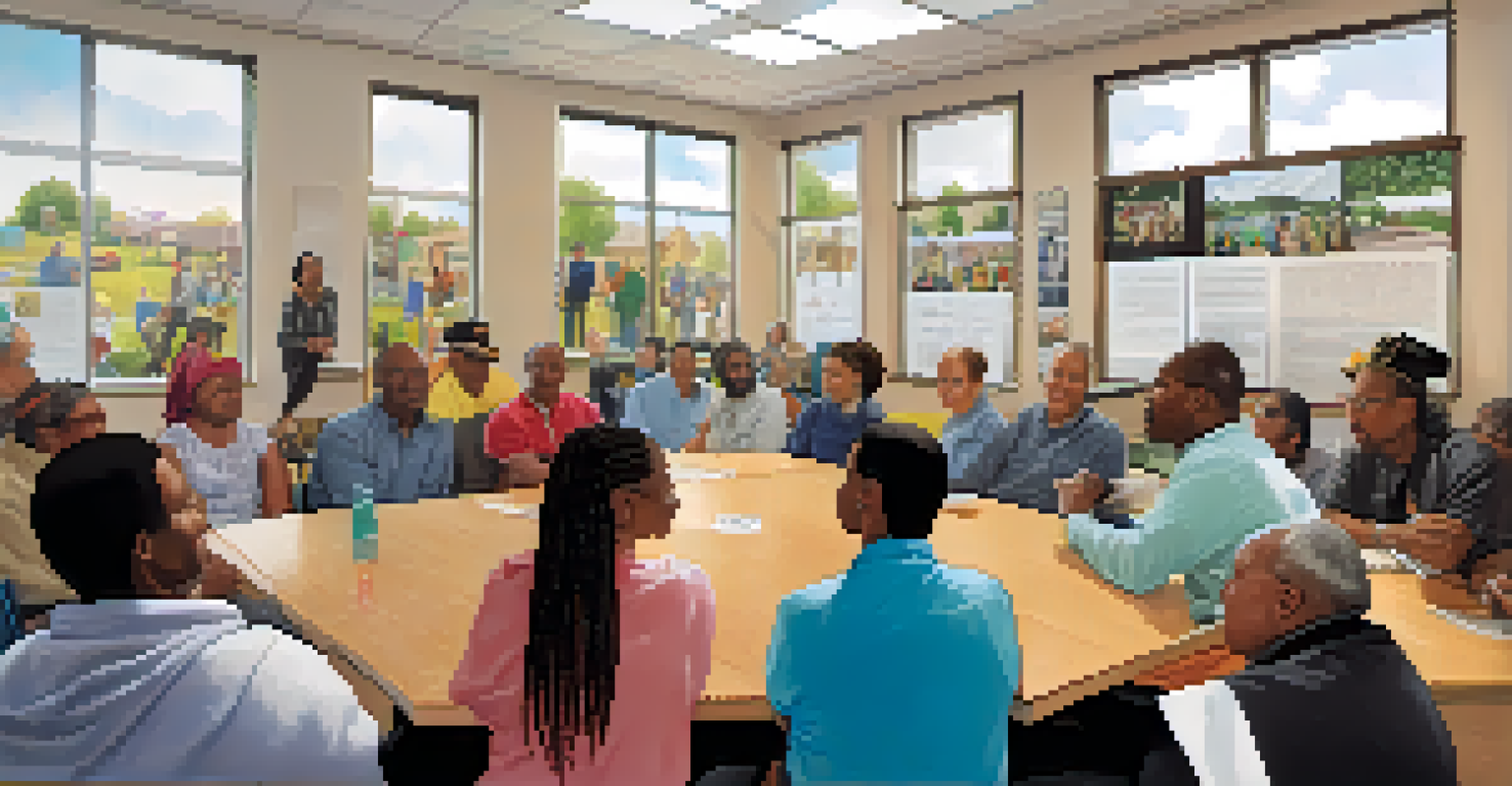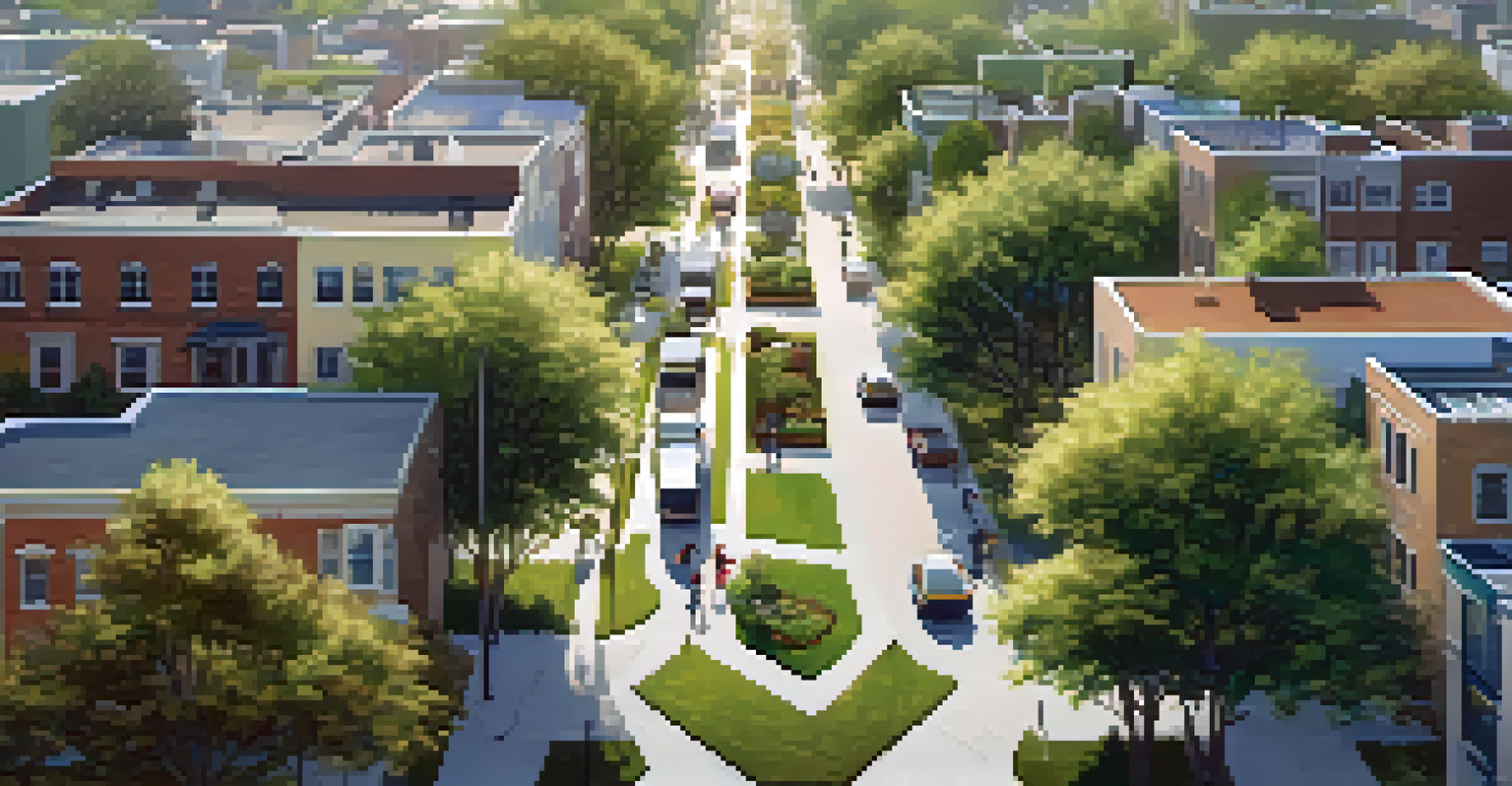Evaluating Neighborhood Revitalization for Investments

Understanding Neighborhood Revitalization Basics
Neighborhood revitalization refers to efforts aimed at improving the economic, social, and physical conditions of a community. This process often involves upgrading infrastructure, enhancing public spaces, and attracting new businesses. By revitalizing neighborhoods, cities can breathe new life into areas that may have experienced decline.
Revitalizing neighborhoods is not just about physical improvements; it's about fostering a sense of community and belonging.
These revitalization projects can lead to increased property values and improved quality of life for residents. However, it's essential to understand the nuances of these improvements and their long-term impacts. Evaluating the success of such initiatives requires a keen eye for detail and a solid understanding of community dynamics.
Investors often look for neighborhoods on the brink of revitalization, as they present opportunities for significant returns. Yet, before diving in, it's crucial to assess the underlying factors that drive revitalization efforts and how they align with investment goals.
Identifying Key Indicators of Revitalization
When evaluating a neighborhood for potential investment, look for key indicators that signal revitalization. These might include rising property values, increased business openings, and improvements in public amenities. Additionally, a decrease in crime rates can be a positive sign that a neighborhood is becoming more desirable.

Demographic shifts can also indicate revitalization potential. For instance, an influx of young professionals or families can signal growth and revitalization. By monitoring these trends, investors can make informed decisions about where to focus their efforts.
Revitalization Boosts Community Value
Neighborhood revitalization enhances economic, social, and physical conditions, leading to increased property values and quality of life.
Consider also the role of local government and community organizations in revitalization efforts. Their commitment can significantly influence the success of initiatives, making it essential to gauge their involvement and strategies.
Assessing Local Infrastructure and Amenities
Infrastructure plays a crucial role in a neighborhood's attractiveness. Well-maintained roads, public transport options, and access to parks and recreational areas can enhance a community's appeal. Investors should evaluate existing infrastructure and any planned upgrades, as these can significantly affect property values.
Investing in the future of our communities means understanding their past and actively participating in their growth.
Additionally, local amenities, such as schools, grocery stores, and healthcare facilities, are vital for residents. A neighborhood with robust amenities is often more appealing to potential buyers and renters. Look for areas where new businesses are emerging, as this can indicate a growing community.
Ultimately, the quality of infrastructure and amenities can make or break a neighborhood's revitalization. Investors who prioritize these factors are likely to see better returns on their investments.
Evaluating Community Engagement and Support
Community engagement is essential for the success of revitalization efforts. Active participation from residents often leads to more sustainable improvements and a stronger sense of ownership. Investors should look for neighborhoods with engaged community groups and initiatives that reflect residents' needs and desires.
Support from local government can also bolster community initiatives. When officials collaborate with residents and businesses, revitalization projects are more likely to succeed. Investors should seek out neighborhoods where this collaborative spirit is evident.
Key Indicators Signal Potential
Rising property values, new business openings, and demographic shifts are crucial indicators that a neighborhood may be on the path to revitalization.
An engaged community can also lead to better long-term outcomes. When residents feel invested in their neighborhood, they are more likely to support ongoing revitalization efforts, making it a wise investment for the future.
Analyzing Economic Trends and Job Growth
Economic trends play a significant role in determining a neighborhood's revitalization potential. Areas experiencing job growth, particularly in diverse industries, tend to attract new residents and businesses. Investors should pay attention to local employment data and economic forecasts to gauge future growth.
Additionally, consider the overall economic health of the region. A strong economy can lead to increased disposable income among residents, which in turn can drive demand for housing and services. A rising tide often lifts all boats, making it a crucial factor in investment decisions.
Investors who align their strategies with economic trends are more likely to find success. Understanding the broader economic landscape can help identify neighborhoods ripe for revitalization.
Risk Assessment and Mitigation Strategies
Every investment comes with risks, and neighborhood revitalization is no exception. Factors like market volatility, changing demographics, and unforeseen economic downturns can impact investment outcomes. It's vital to assess these risks thoroughly before committing to a revitalization project.
Mitigation strategies can help safeguard investments. This might include diversifying investments across multiple neighborhoods or focusing on properties with lower entry costs. Having contingency plans in place can also provide peace of mind and protect against potential losses.
Sustainability Ensures Long-term Success
Investors should prioritize sustainable projects that not only provide immediate gains but also foster enduring community growth and stability.
Ultimately, a well-thought-out risk assessment can enhance an investor's confidence and lead to more informed decision-making. Balancing potential rewards with associated risks is key.
Long-term Vision for Sustainable Revitalization
A successful investment in neighborhood revitalization requires a long-term vision. Investors should consider not only immediate gains but also the potential for sustainable growth over time. This means looking for projects that will continue to enhance the community long after the initial investment.
Sustainability can encompass various aspects, from environmental considerations to social impact. Projects that prioritize green spaces, energy-efficient buildings, and social equity are likely to resonate with both current and future residents. This holistic approach can lead to a more robust community.

Investors who keep sustainability at the forefront of their strategies are likely to see a more stable return on investment. A long-term commitment to revitalization can yield benefits that extend beyond financial gains.